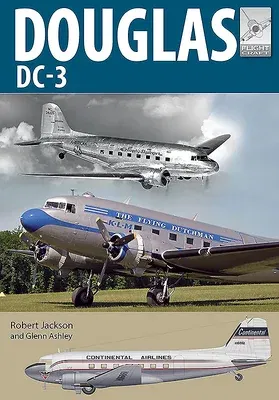No airliner in the history of commercial aviation has had a more
profound effect than the Douglas DC-3. It was reliable, easy to maintain
and carried passengers in greater comfort than ever before.
Its origins stem from a design by the Douglas Aircraft Company of Santa
Monica, California. Known as the Douglas Commercial One, or DC-1, this
new aircraft was revolutionary in concept. It was quickly developed into
the DC-2, an airliner that lead to Douglas' domination of the domestic
air routes of the United States, and of half the world.
Experience with the DC-2 led to the development of an improved version,
the Douglas Sleeper Transport (DST), first flown on 17 December 1935.
This in turn evolved into a 21-seat variant, the DC-3, featuring many
improvements. The first American Airlines DC-3 entered service in June
1936, and within three years of its introduction the aircraft accounted
for a staggering 95 percent of all commercial air traffic in the United
States. From commencement of service to the Japanese attack on Pearl
Harbor, the DC-3 increased domestic revenue passenger miles more than
fivefold. Of the 322 aircraft operated by the country's airlines in
December 1941, 260 were DC-3s. At the pre-war peak, 30 foreign airlines
operated the DC-3. On the eve of war, the DC-3's scheduled flights
represented 90 percent of international air traffic.
In addition to over 600 civil examples of the DC-3, 10,048 military C-47
variants were built, as well as 4,937 produced under license in the USSR
as the Lisunov Li-2 and 487 built by Showa and Nakajima in Japan as the
L2D. After the war, thousands of surplus C-47s, previously operated by
several air forces, were converted for civilian use. These aircraft
became the standard equipment of almost all the world's airlines,
remaining in front-line service for many years. The ready availability
of cheap, easily maintained ex-military C-47s, both large and fast by
the standards of the day, jump-started the worldwide post-war air
transport industry.
The full remarkable story of the DC-3, and its ancestor, the DC-2, is
told in these pages, providing a wealth of information for the modeler
and the enthusiast alike.

